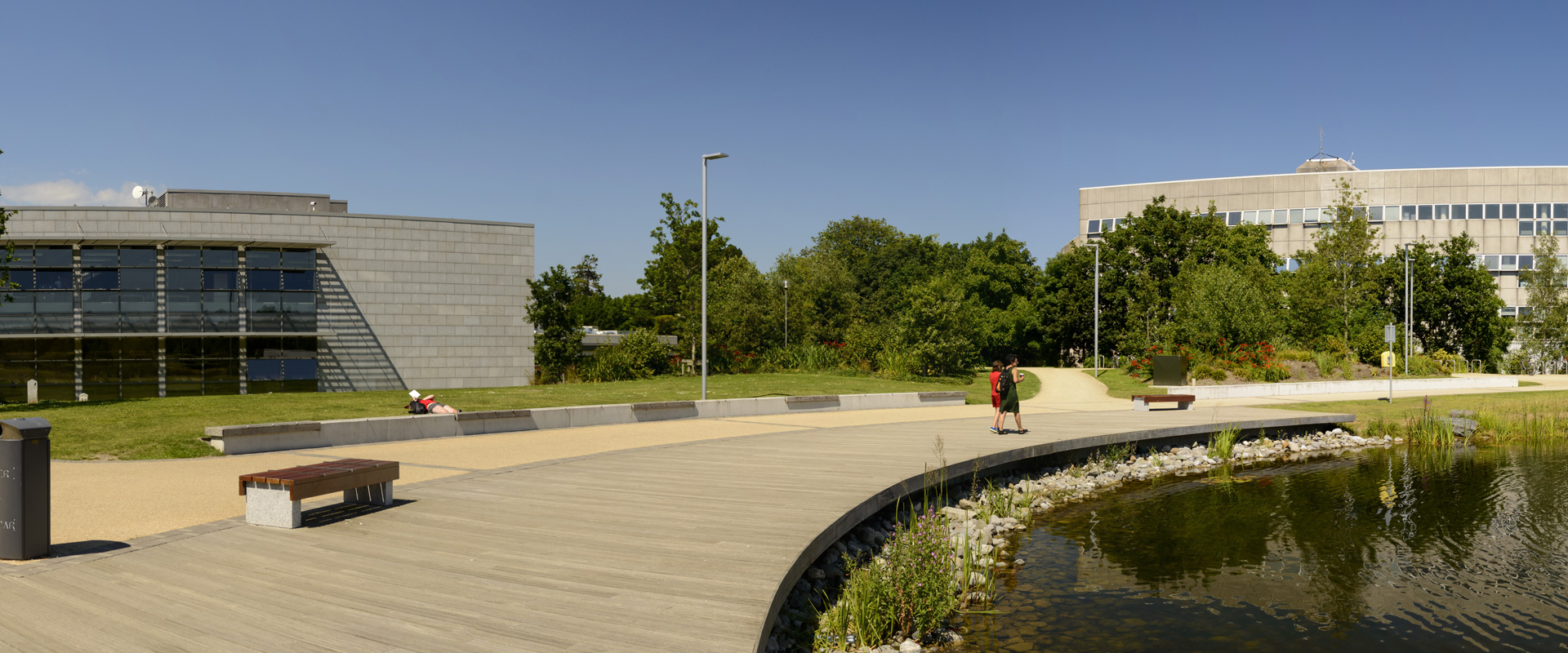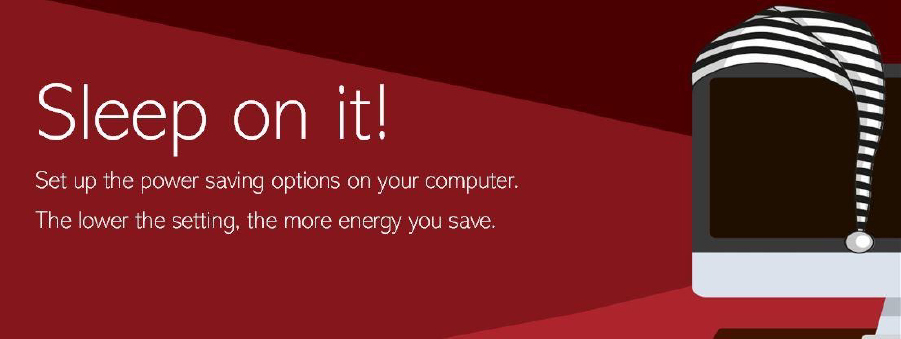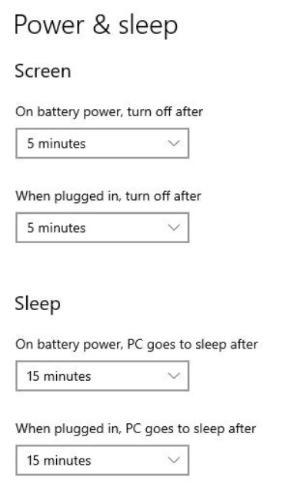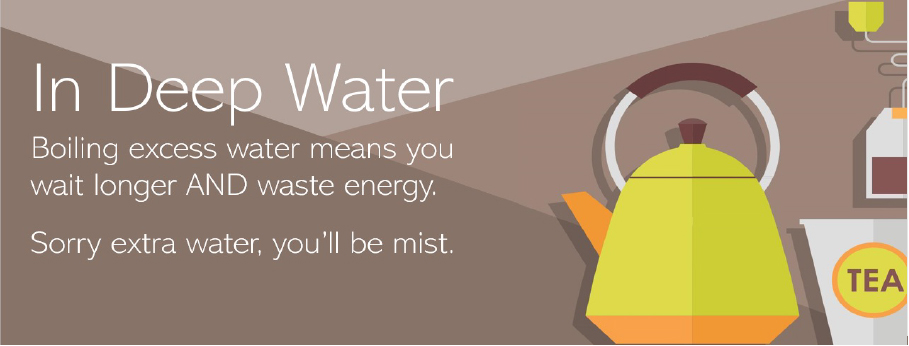
Reduce Your Use - Week 3
Water and Office Equipment
December 2023
This week we’re looking at the energy used in in our offices by computers and monitors plus the energy used in the heating and use of water in our offices and homes.
While modern computers and screens now draw considerably less power, setting up your power saving options is easy to do and will help save energy by putting them into one of three low-power states when they’re not in use.
Have a look at this Webinar that explores (opens in a new window)energy savings in our home and home-offices - if you work or study from home, even occasionally, you can pick up some very useful tips.
Remember to consider the energy efficiency of office equipment when purchasing for your office – (opens in a new window)take a look at this SEAI blog to find out how the energy label can help you when shopping for work or at home.

Most computers have three levels of low-power state: sleeping, hibernating, and shut down. The lower the time setting before they kick in, the more energy you save. Experiment a little to see what suits your schedule and mode of working.
 In sleep mode, your computer shuts down portions of itself but saves a snapshot of what you were doing. When you return and wobble your mouse, the computer wakes up quickly, and you're back to work in usually less than five seconds.
In sleep mode, your computer shuts down portions of itself but saves a snapshot of what you were doing. When you return and wobble your mouse, the computer wakes up quickly, and you're back to work in usually less than five seconds.
Hibernate mode is similar but shuts off more things so uses less power. The main difference you’d notice is the time it takes to boot back up. Sleep mode will boot your computer back up within a few seconds of moving the mouse, but it might take a few minutes to come out of hibernation.
Shutting down your laptop fully means your computer is totally powered off and uses almost no power. A regular shutdown can avoid buggy technology and allows updates to install. You’ve probably had computer issues that a simple reset fixed and making that reboot a habit can nip those problems in the bud. It resets the computer and gives it a fresh start.
Set your monitor to sleep when you have not used your computer for 5-10 minutes.
Please note that screen savers don’t save energy. They keep your computer running at full power, rather than slipping into sleep mode.
If your monitor’s brightness is set to 100%, you can save even more by bringing it down to a level where you can still use it without any problems.
Links to (opens in a new window)macOS User Guide and (opens in a new window)Windows Support for more information on setting up power saving options.

Most of us underestimate the energy needed to treat and then pump water into our homes or places of work. Then there’s the energy we use to heat water for washing and showering. The litres and carbon emissions soon add up.
Have a look below at the Energy Exercises of the Week and the energy and water saving tips.
- Fill the kettle with only the water that is needed for your cuppa. If you a feeling like being extra energy efficient, a round of tea and coffee for your colleagues will save energy and maybe score you a few brownie points too. However, boiling excess water means you wait longer and waste energy.
- If there are now fewer people in the office most days, does it still make sense to have that large boiler on all day for just a few cups of tea and coffee? Consider the alternatives, such as a kettle or hot cup appliance that boils just enough for one brew.
- Use a dishwasher instead of washing up plates and mugs separately – and please make sure it is full before switching it on. If washing by hand, run a bowl of water rather than letting it run down the plug to be wasted.
- Turn taps off fully after use to save water and energy. Report any drips or leaks.
- Use cold water if you don’t need hot.
Remember – you can report leaks and dripping taps in both offices, kitchens and residences on campus to (opens in a new window)estates@ucd.ie
